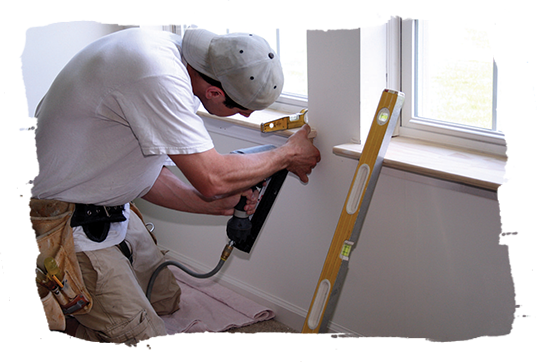
Before you begin any plumbing work in the home, it is important to check if you are required to have a plumber permit. A plumber permit is usually required for specific types of work. You don't have to apply for a permit if you're installing a sewage line.
The plumbing of a sewer line requires special skills
A plumber permit is required if you plan to perform any plumbing work that involves the sewer line. For many reasons, plumbing permits are necessary. These permit can be used to ensure safety and functional compliance of the plumbing system. These permits may cost as little as a few dollars or as much up to several hundred dollars. Failure to apply for these permits could result in criminal and civil penalties.
Before you start a project in plumbing, make sure to check with your local building department to ensure that a permit is required. Often, these departments will list any permits for different trades, including plumbing, on their website. Most times, it is easy to obtain a plumbing permit.

The rules and regulations for sewerwork in buildings are required when a plumber's permits is required. These rules set out the requirements for how a plumber must work and what materials are acceptable. These requirements are only met by plumbers who have been properly trained and licensed.
One set of fixtures are required for plumbing work
If you're putting in a new set of fixtures or changing an existing one, you'll need a plumber permit. Plumbing permits are required by law, and you must have one in order to install new indoor plumbing fixtures. If you plan to modify the plumbing system or add water service lines, a permit is also required.
To be able to perform plumbing work, you need to be a licensed master plumber. The Plumbing Code of New York State states that work must be completed to meet the minimum requirements. The plumbing permit must remain on the property during work. Without it, the work will not be allowed to begin.
The process of obtaining a plumbing permit varies by county, and you should always consult with a plumber before you begin. Permits can cost anywhere from a few dollars to a few thousand dollars. A permit is required to perform any work. Failure to get one can result in civil or criminal penalties. The plumbing system is complex and requires a permit to ensure that it is done properly.

Plumbing work that doesn't require a permit
There are many plumbing projects that don't require a permit. Some projects are cosmetic, like a simple faucet repair. Some are minor, like replacing a faucet. A plumber may be necessary in these instances. You will need the appropriate permits and licenses to ensure that your project is successful, regardless of what it is.
Major plumbing projects that alter or replace the plumbing fixtures within a property or building will require a plumbing permit. Official inspections are required to obtain plumbing permits. To prove their competency, plumbers receive plumbing licenses.
Permits are required for large-scale plumbing projects. However, they are not necessary to be granted for smaller projects. Contractors can begin pipe-laying with no cover for large projects like bathroom remodels. Final inspections are required after completion of the initial stages.
FAQ
How often should I call a handyman?
It depends on your project. One handyman might be enough to do a basic job like changing a bulb or fixing a leak. For large-scale remodeling projects, you might need to hire several handymen.
Is it worth the extra cost of professional handyman work?
It all depends on what type of project you are looking to accomplish. A professional handyman service is recommended for complex projects such as office renovations.
Who will manage my handyman task?
Professional handymen are the best option if you're looking for someone local who can do a job such as replacing a light bulb or fixing a leaky faucet. A handyman service might be a good option if you have multiple jobs to do, such as replacing a roof or installing floor tiles.
Handyman Services offers you ongoing support and maintenance.
Which is simpler: Contracting or being a handyman.
Handyman work requires less resources than contracting because you only need your own tools. You will need to be able manage your work and time, as contractors rely on subcontractors for most of their work.
How do you find a trustworthy handyman to help me?
You should always check references before hiring a handyman. Ask family members and friends who have dealt with them in the past. Check out the internet for reviews. Handymen can post reviews on a variety of sites.
Can a handyman fix my leaky faucets?
While a handyman is capable of handling minor repairs, they will not be qualified to do major projects like wiring up a house or installing custom-made cabinets. A handyman can do minor home improvements, but there are no limitations to his abilities.
What happens if a handyman causes me damage or doesn't do his job as I would like?
If anything goes awry during the project, you'll need to inform him immediately. It is a good idea to keep a detailed log and include photographs. Then contact your insurance company and file a claim.
Statistics
- With a strong housing market, the handyman and general maintenance worker industry are expected to grow by nearly 10% in the next decade. (housecallpro.com)
- Another estimate was that the market in the United States was $126 billion and was increasing by about 4% annually. (en.wikipedia.org)
- More than 20% of homes in America have outdoor living spaces, including decks and patios. (mrhandyman.com)
- A franchise was approximately $110,000 with a franchise fee of $14,900, according to a spokesperson for a national handyman franchise. (en.wikipedia.org)
- Our handyman services for seniors are provided by professional senior helpers who have been serving the community for over 20 years with 98% customer satisfaction. (cantatahomeservices.org)
External Links
How To
How to Replacing a Broken Tile
Step 1: Remove the old tiles.
Removing the tiles from your flooring is a good idea. You'll want to keep these intact if you use them later. It's important to note which parts are missing or damaged in order to be able to find the right replacements.
Step 2: Choose New Tiles
Take a look at some different options available for tile replacement.
-
You can find a tile replacement that is similar to the one you have just removed.
-
Use the measurements you took when removing the tile to find a matching piece. This will make it much easier to find the right size without measuring again.
-
You should look for different colors, patterns and textures.
-
Consider what grout you'd like to use (if any). Some people prefer to use a single color, while others love mixing it up.
-
Be sure to select a tile that is resistant against moisture.
-
Make sure you consider where your tile will be placed. It can help you save money and time.
-
After you've selected your tile, place your order online or at your local Lowe's shop.
Step 3 - Install the new tiles.
You can install new tiles in the same way you did before. Be careful to align them properly so they fit together perfectly.
Step 4 – Clean up
Be sure to vacuum up all crumbs and debris before applying the last layer.
This will prevent dirt or dust from collecting between the tiles and causing mold.
Step 5 - Sand the Floor
After cleaning everything, sand down the floor to remove any loose particles left behind by the previous step.
Step 6 – Finish Off
After the floor has been smoothed, you can apply protective coatings to the tiles. It is important to wait before you apply the protective coatings.
For stain protection, you can always use a product called "damp&dry" to clean your floors.
However, it won't cover every possible problem that may occur after you've installed your new tiles. An anti-slip coating can be added to the protective layer for children who are often running around.
Finally, don't forget to keep your protective sealer in place for several weeks before moving into your new home.